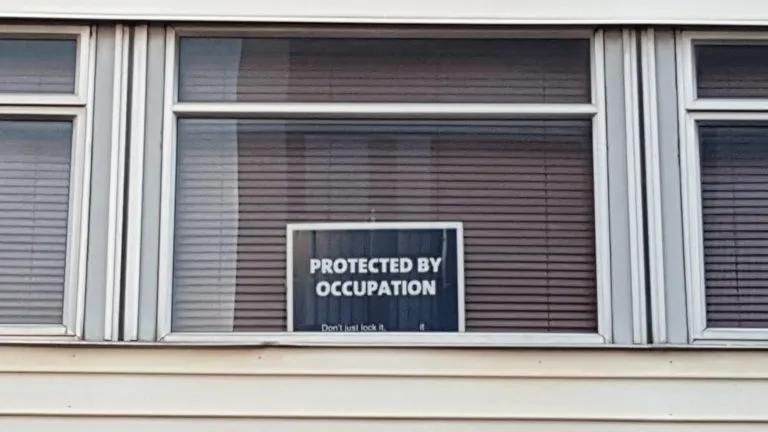Let’s move to…a disused basement in a central location?
Published: by Zorana Halpin
It’s a curiously modern phenomena – property guardians around the country are paying rent to live in squat like conditions.

The birthplace of ‘property guardianships’ is illegal squatting in empty properties (supposedly Camelot, one of the biggest property guardian operators, is the brainchild of a squatter). But in the current reincarnation, guardians pay rent for the privilege of ‘guarding’ the property whilst it’s empty, which helps to keep out squatters and protects against theft. I’ve seen disused warehouses, care homes, churches and basements all advertised on property guardian websites.
Property guardians praise the cheap rent and convenient locations, whilst acknowledging the downsides. Amidst a recent swell of media interest, on one Facebook page a writer proclaims “It’s not all doom and gloom being a guardian.”
I don’t want to break up the party – because creative solutions to the housing crisis are needed – but safety is never an acceptable trade-off. And the reality is that behind their quirky veneer, some of these living arrangements are a dangerous throwback to the 1970s when there were a number of high profile deaths in large properties governed by few health and safety rules and owned by notorious landlords.
Hats off to successive government for dragging us out of that era. But we shouldn’t be going back there.
The property guardian Facebook page tells of more guardians being crammed into properties, presumably as normal housing options become harder and harder to find or to afford. Running a property guardian scheme seems to have become more profitable and more providers are squeezing into the market. Now it seems that the rent isn’t always that cheap. I spoke to someone last week who had to find an extra £100 a month when his rent was unexpectedly increased from £400 pcm to £500 pcm. This seems particularly unfair given that, similar to letting agents, the dominant business model is to double charge: the owner of the building pays for their building to be looked after, and the guardian pays to look after the building.
And we’ve heard worrying reports about properties containing asbestos, and seen first-hand properties being advertised which are so hazardous that local authorities would be legally obliged to carry out an inspection of the property – if they were aware of it. In the past we successfully campaigned for stricter rules for large properties (i.e. HMO regulations) to prevent more deaths, but these rules don’t apply here because buildings with property guardianship arrangements aren’t classified as HMOs. We’ve also heard of some people being given as little as 24 hours notice to leave – which isn’t legal under any of the possible contractual arrangements that property guardians enter into. To be clear: property guardians have rights that they can legally enforce, the exact nature of which will be determined by the type of building they inhabit and the parts they have access to.
We recognise that there are some people who like being a guardian – particularly the young, mobile and those willing to move at the drop of a hat. But this confusion around the legal status of guardians is worrying, and probably a symptom of the sudden growth in the number of providers. Some seem perfectly decent, but there are others who just don’t know what the rules on letting property are – rules which exist for good reason. We’ve moved on so much from the days of national headlines about preventable deaths in dodgy rented properties – no one wants to see us going in the wrong direction.
There’s a growing unease among some people in government about these arrangements, and rightly so. We need government to step in and clarify to landlords and tenants the legal basis of these living arrangements and – most importantly, the minimum safety requirements that have to be met.
Everyone should have a safe and decent home – even if it’s a bit cheap and for a short period of time.
Join our campaign to fix private renting here.